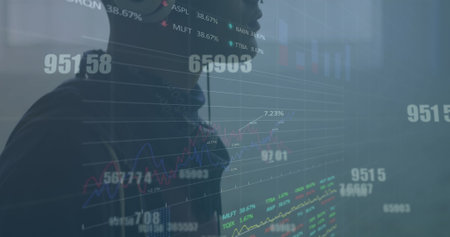Foundations of Technical Analysis
Technical analysis stands as one of the cornerstones of modern trading and investing, deeply rooted in both history and human psychology. The origins of technical analysis can be traced back to 18th-century Japan with the development of candlestick charting by rice traders, and later popularized in the West through Charles Dow’s work in the late 19th century. These early pioneers recognized that price movements were not random but often reflected collective behavior and sentiment among market participants. At its core, technical analysis is predicated on three fundamental principles: price discounts everything, prices move in trends, and history tends to repeat itself. By studying charts, patterns, and indicators, traders seek to identify and anticipate these trends before the broader market reacts. The most basic tools—such as support and resistance levels, moving averages, volume analysis, and momentum oscillators—form the groundwork for more advanced strategies. While critics sometimes dismiss technical analysis as mere “chart watching,” its enduring relevance lies in its ability to quantify crowd psychology. Every price tick represents a consensus of fear, greed, optimism, or uncertainty among thousands of market participants. Understanding these foundational elements is essential for appreciating how technical analysis operates not just as a set of tools, but as a window into the psychological forces shaping price movements in American financial markets.
2. Understanding Market Psychology
Market psychology lies at the heart of technical analysis, as price movements are ultimately the result of collective human behavior. Investors and traders, regardless of their sophistication or access to data, are subject to a range of psychological biases and emotional responses that drive their decision-making. These factors contribute to the recurring patterns, trends, and reversals observed on price charts.
One of the foundational concepts in market psychology is herd behavior. When investors observe others buying or selling an asset en masse, the instinct to follow suit often overrides individual analysis. This tendency can amplify both upward rallies and sharp sell-offs, leading to the familiar boom-and-bust cycles in U.S. markets.
Emotions such as fear and greed are powerful motivators. Fear can trigger panic selling during downturns, while greed may fuel speculative bubbles when prices soar. Other cognitive biases like confirmation bias (favoring information that supports one’s existing views), loss aversion (the pain of losses outweighing the pleasure of gains), and recency bias (overweighting recent events) all shape how traders interpret market signals and act upon them.
The table below summarizes some key psychological drivers influencing market participants:
| Psychological Driver | Description | Impact on Markets |
|---|---|---|
| Herd Behavior | Following the majority’s actions rather than personal analysis | Can exaggerate trends and reversals |
| Fear & Greed | Emotional extremes driving decisions under uncertainty | Panic selling or overzealous buying |
| Confirmation Bias | Seeking information that reinforces pre-existing beliefs | Ignoring contrary signals; reinforcing trends |
| Loss Aversion | Avoiding losses even at the expense of potential gains | Premature exits or holding onto losing positions too long |
| Recency Bias | Overemphasizing recent events over historical context | Knee-jerk reactions to short-term news |
The interplay of these psychological forces creates recognizable price patterns—such as head-and-shoulders formations, support/resistance levels, and momentum shifts—that technical analysts study to anticipate future movements. By understanding these behavioral undercurrents, American investors can better navigate not only chart patterns but also their own emotional responses within fast-moving markets.

3. Sentiment Indicators and Their Impact
When it comes to understanding the psychological drivers behind market movements, sentiment indicators stand out as crucial tools in the technical analyst’s toolkit. These metrics help quantify the collective mood of investors—whether they are feeling greedy, fearful, complacent, or anxious. In U.S. markets, several widely followed sentiment indicators offer actionable insights into how group psychology can push prices beyond what traditional fundamentals might suggest.
The VIX: Wall Street’s Fear Gauge
The CBOE Volatility Index (VIX), often referred to as the “fear gauge,” measures expected volatility in the S&P 500 over the next 30 days. A rising VIX typically signals increasing investor anxiety and risk aversion, while a low VIX suggests confidence and calm. During periods of heightened uncertainty—such as geopolitical shocks or economic data releases—a spike in the VIX may foreshadow sharp price swings or corrections. Savvy traders often monitor these changes as early warning signals, adjusting their positions to hedge against potential downside or capitalize on extreme sentiment shifts.
Moving Averages: The Wisdom of Crowds
Moving averages, like the 50-day or 200-day simple moving average (SMA), offer more than just trend-following signals; they also reflect the aggregated behavior of countless market participants. When prices cross key moving averages, it often triggers emotional responses—herding behavior among retail investors or automatic buy/sell orders from institutional algorithms. This self-reinforcing cycle can lead to momentum-driven rallies or selloffs, demonstrating how crowd psychology gets embedded directly into price action.
Put/Call Ratios: Gauging Risk Appetite
The put/call ratio tracks the volume of bearish put options versus bullish call options traded on major exchanges. High ratios indicate that investors are loading up on downside protection—typically a sign of growing pessimism—while low ratios reveal widespread optimism. Contrarian traders watch for extremes in this indicator as potential inflection points; when fear reaches a crescendo (high put/call ratio), markets may be poised for a rebound as selling pressure exhausts itself.
Integrating Sentiment into Technical Analysis
By monitoring these indicators collectively, analysts can gauge whether prevailing sentiment is rational or dangerously one-sided. Extreme readings often precede reversals, not because fundamentals have changed, but because market psychology has swung too far in one direction. Understanding how these sentiment gauges operate within the broader context of U.S. financial markets empowers investors to anticipate moves that logic alone cannot explain—and underscores why psychology remains central to technical analysis.
4. Herd Behavior and Momentum Trading
In the landscape of technical analysis, herd behavior and momentum trading play a pivotal role in shaping market sentiment and price movements. The phenomenon of herd mentality—where investors collectively follow prevailing trends rather than relying on independent analysis—can amplify both rallies and sell-offs, often resulting in pronounced market swings. This crowd-driven dynamic is especially evident in U.S. financial markets, where rapid dissemination of information via social media and news outlets accelerates group reactions to market events.
The Mechanics of Herd Behavior
Herd behavior emerges when traders observe others making similar investment decisions and subsequently follow suit, frequently out of fear of missing out (FOMO) or concern about underperforming peers. This psychological bias can override rational judgment, leading to increased buying during uptrends and excessive selling during downturns. In American trading culture, this effect is magnified by a competitive environment and the prevalence of short-term trading strategies.
How Herd Mentality Creates Trends
The collective actions of investors fuel momentum: rising prices attract more buyers, while falling prices trigger widespread selling. Technical analysts monitor these movements through price charts and indicators such as moving averages, Relative Strength Index (RSI), and volume spikes. These tools help identify when herd behavior is creating sustainable trends or signaling potential reversals.
Observable Patterns from Crowd Dynamics
Momentum trading capitalizes on the inertia generated by herd behavior. As more participants buy into a trend, price momentum increases until it reaches an inflection point—often visible through specific technical patterns like breakouts, support/resistance levels, or overbought/oversold conditions. Traders who recognize these signals can either ride the trend or anticipate a reversal.
| Herd Behavior Effect | Technical Pattern Observed | Potential Market Outcome |
|---|---|---|
| Panic Selling | Sharp decline, high volume, “capitulation” candles | Potential bottom formation & reversal opportunity |
| Buying Frenzy (FOMO) | Steep rally, overbought RSI readings | Bull run continuation or correction risk |
| Trend Chasing | Sustained up/downtrend, moving average crossovers | Formation of new support/resistance zones |
| Crowd Exhaustion | Divergence between price & momentum indicators | Possible trend reversal or consolidation phase |
Understanding how herd mentality drives observable technical patterns enables traders to better navigate periods of heightened volatility and capitalize on opportunities created by collective crowd behavior in U.S. markets.
5. Cognitive Biases in Chart Interpretation
Technical analysis is often celebrated for its rational approach to understanding price movements, but human psychology inevitably shapes how traders interpret charts and signals. Even the most seasoned market participants are susceptible to cognitive biases that can distort judgment and decision-making. One of the most prevalent of these is confirmation bias. This bias leads traders to seek out or overweight information that aligns with their pre-existing beliefs while ignoring evidence that contradicts their expectations. For example, if a trader is convinced that a bullish trend will continue, they may focus exclusively on indicators confirming their view, missing early warning signs of a reversal.
Another significant factor is loss aversion, rooted in behavioral economics and widely observed among American investors. The emotional impact of losses tends to be stronger than the satisfaction from equivalent gains, which can result in traders clinging to losing positions longer than is rational or selling winners too early out of fear. These tendencies are amplified by social dynamics and financial media, which can reinforce herd behavior and collective misjudgment.
Other common pitfalls include recency bias—overemphasizing recent price action while discounting longer-term trends—and anchoring, where traders fixate on specific price levels or past patterns regardless of current market context. The fast-paced nature of U.S. markets, with real-time news and algorithmic trading, means these psychological shortcuts can lead to costly errors in interpretation.
Recognizing these biases is crucial for anyone relying on technical analysis as a decision-making tool. American traders, especially those active in volatile sectors like tech or crypto, must develop strategies to counteract these mental traps—whether through disciplined risk management, structured trading plans, or embracing diverse viewpoints within their research process.
6. Applying Technical Analysis in the American Market Context
Technical analysis, though universal in its core principles, takes on unique characteristics when applied to the U.S. financial markets. The American market landscape is defined by a complex regulatory framework, distinctive trading hours, and widespread access to advanced trading platforms—all of which have significant implications for both market sentiment and the efficacy of technical trading strategies.
Regulatory Environment: Guardrails for Market Behavior
The United States Securities and Exchange Commission (SEC) and other regulatory bodies play a pivotal role in shaping market psychology by enforcing transparency, fair disclosure, and investor protection measures. These regulations not only foster trust among retail and institutional participants but also influence the types of information traders can use for technical analysis. For example, strict rules against insider trading mean that price action and volume patterns often become even more critical tools for anticipating market moves, as they reflect the aggregate decisions of fully informed participants within legal boundaries.
Market Hours: Dynamics of Session-Based Trading
The structure of U.S. market hours—typically from 9:30 AM to 4:00 PM Eastern Time—creates distinct periods of heightened volatility and liquidity. Pre-market and after-hours sessions further segment trading activity, sometimes leading to price gaps or exaggerated moves that technical analysts must account for. American traders often adapt their strategies around key opening and closing times, using techniques like gap analysis or monitoring volume spikes at session transitions. These time-bound dynamics heighten psychological factors such as fear-of-missing-out (FOMO) or panic selling, making behavioral cues even more pronounced in intraday charts.
Popular Trading Platforms: Democratization and Speed
The rise of commission-free platforms like Robinhood, alongside established brokers such as TD Ameritrade and E*TRADE, has democratized access to technical analysis tools for everyday Americans. Real-time data feeds, customizable charting interfaces, and social features have accelerated the spread of crowd-driven sentiment. As a result, collective behaviors—like momentum chasing or herd reactions to viral “meme stocks”—are increasingly visible in price patterns. This accessibility fosters a feedback loop where retail sentiment becomes a self-fulfilling driver of short-term price swings, reinforcing the psychological foundations underpinning technical analysis.
Ultimately, applying technical analysis within the American market context requires not just mastery of chart patterns or indicators but a keen awareness of how U.S.-specific factors shape trader behavior. Successful practitioners leverage this macro understanding to anticipate shifts in sentiment and adapt their strategies accordingly—whether navigating regulatory announcements, exploiting session-based volatility, or interpreting signals amplified by digital communities.
7. Bridging Technical Analysis and Behavioral Finance
As the landscape of financial markets grows increasingly complex, the intersection of technical analysis and behavioral finance has become a focal point for both academics and practitioners. Historically, technical analysis has relied on price patterns, volume, and indicators to forecast future market movements. However, an evolving body of research in behavioral finance highlights the psychological biases—such as herd behavior, loss aversion, and overconfidence—that drive collective market sentiment and can create predictable price anomalies.
The Convergence: More Than Just Patterns
This convergence recognizes that charts are not just visual representations of supply and demand but also a reflection of human emotion under uncertainty. When traders spot a breakout or reversal pattern, they are essentially interpreting the aggregated psychology of market participants. Behavioral finance provides context to these patterns by explaining why traders tend to overreact to news or cling to losing positions, fueling trends or reversals that technical tools aim to capture.
Practical Approaches for Traders
For those seeking to integrate psychological insights into their technical toolkit, several strategies stand out:
1. Incorporate Sentiment Indicators
Use metrics like put-call ratios, the VIX (Volatility Index), or social media sentiment tracking to gauge crowd psychology. These tools can complement traditional technical indicators by signaling potential turning points when sentiment becomes excessively bullish or bearish.
2. Recognize Cognitive Biases in Chart Patterns
Understand that classic formations—like double tops or head-and-shoulders—often emerge from collective psychological responses to prior price action. Being aware of confirmation bias or recency bias can help you avoid common traps when interpreting these signals.
3. Emphasize Risk Management with a Psychological Lens
Set stop-losses and take-profits not only based on chart levels but also considering your own emotional tendencies. Tools like journaling trades and reviewing emotional triggers can enhance discipline and reduce impulsive decisions.
A Holistic Approach for Modern Markets
The synergy between technical analysis and behavioral finance underscores that successful trading is as much about managing one’s mindset as it is about mastering charting techniques. By embracing this holistic approach—melding data-driven analysis with self-awareness—traders position themselves to navigate volatile markets with greater resilience and adaptability, reflecting the realities of American market culture where psychological agility is as valued as analytical prowess.


